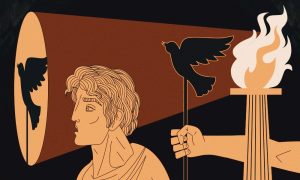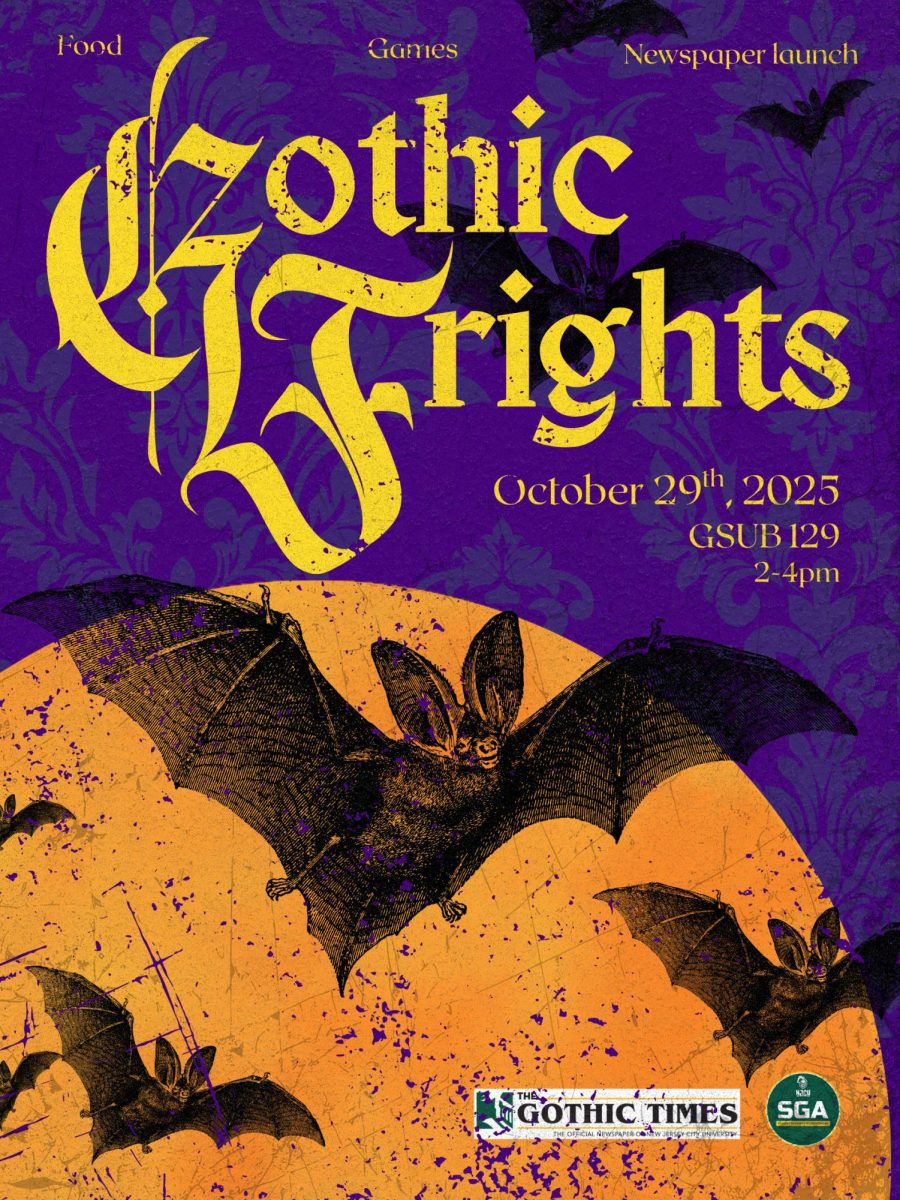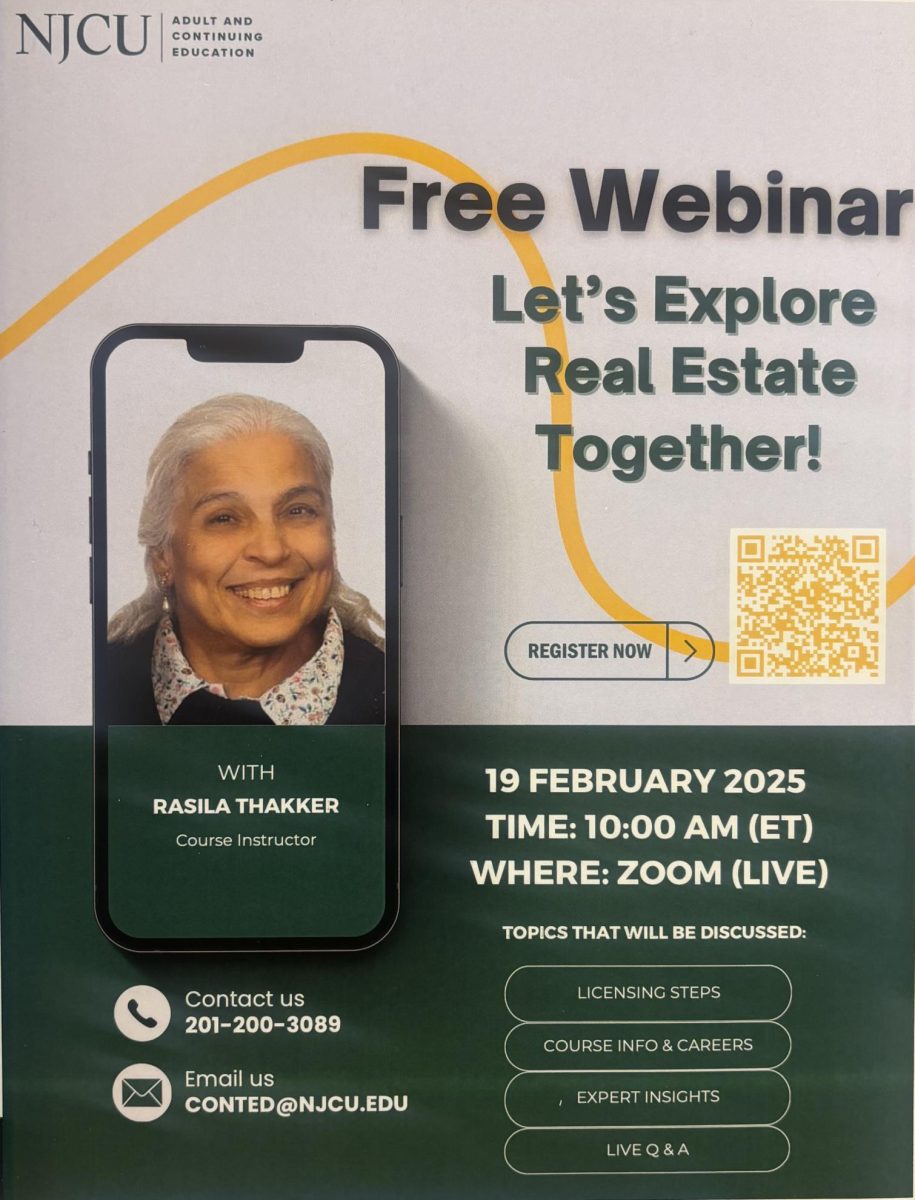The Sport of Brazilian Jiu-Jitsu
July 25, 2016
A Wednesday afternoon – nerves are at an all-time high. Entering the doors of Renzo Gracie Fort Lee/ Teo Brazilian Jiu Jitsu, a new student smells a distinct odor. Hard to explain the smell as one can equate it to their local gyms. The combination of sweat, the Gi, and feet that makes up that smell. Looking around the gym, students, parents, and unknown individuals are offering their polite greetings. The greetings will take you back a little as the individuals do not know who you are and are taking the time to salute a stranger. Walking up to the counter, the individual is greeted by a representative of the gym. It’s his first night and his nerves are getting the best of him. Questioned by the representative, the individual is unable to rebut. Eventually he’s pointed to the night instructor. A grin cheek to check he introduces himself. It is Alan Teo, the head of the gym that bears his name. After exchanging pleasantries with one another, the prospective student begins questioning Teo. At this point Teo interrupts him and counters with a question of his own: what has motivated you to join my gym? But before the individual responds, the class is about to begin.
“Ah, you have come for your first night of pain,” Teo said to which the new student’s response is only that of a deer in the head lights “I am only kidding. You are in safe hands and I promise you will not get hurt.”
Questions begin to flow out like a river as Teo just keeps answering them one after the other. During the conversation, Teo asks to be addressed as professor as he holds a second degree in black belt BJJ; it’s his mission as the instructor to pass on Jiu-Jitsu to others. The questioning continues smoothly ‘til one particular question ends the conversation: “Why did you get into BJJ?”
His Grinch smile comes out. “How about you go get fitted for a loaner Gi and roll awhile,” Professor Teo said “After you roll sometime come back to me and I shall answer some more questions.”
Putting on the gi is an art in of itself. The pants have two laces on the waist side which have to be pulled all the way out and tied in the middle. Some pants will have a loop in the middle so that the two laces can be tied as Though tying shoe laces. Pants have to be tied real tight because they become loose a mooning will rise, but more importantly your opponent will use that against you to gain the upper hand. The jacket must be crossed left over right at all times, and the belt must be tied around the waist. A proper knot is essential as an unsuitable one is a sign of disrespect. The opponent will use that awful knot to their advantage leading to a choke or submission. The last thing anyone wants is to be reprimanded by the professors. With the gi properly fitted on you, you’re ready to roll on the mat.
To better understand the sport, one must look no further than the first family of BJJ, the Gracies. The name Gracie, many evoke to the Gracie Mansion, home to the mayor of New York City. What few people may not know is that the Gracies were prominent figures in early New York City history. The American lineage starts with Archibald Gracie, a prominent banker during the late 1700s and 1800s with ties to such figures as Alexander Hamilton and John Jay. Roughly 4,000 miles away, the Gracie lineage forged on through Archibald’s younger brother George, a successful shipping magnate during the same era. As the American Gracies flourished, by the early 20th century the Brazilian Gracies, through money mismanagement, had hit rock bottom. Having reached the lowest point of their existence, the Brazilian Gracies arose to prominence once more through the efforts of brothers Carlos and Hélio Gracie.
If you were to ask any member of the Gracie family who invented Gracie Jiu-Jitsu, there is a split faction; half of them would say Carlos invented the sport but the other half would say Hélio is to be given credit. Their combined efforts of the brothers gave rise to this lifestyle – this philosophy. Nevertheless, despite the splintering of the Gracie family today, they remain unanimous in their efforts to continue the vision of Carlos and Hélio.
In 1916, Carlos Gracie became the first Gracie pupil of Mitsuyo Maeda, Count Koma as he was known. Maeda was a student of judo founder Jigoro Kano. Kano used the ancient teachings of jiu-jitsu, redefined, and created his own fighting style, known at the time as Kano Judo. Kano Judo emphasized throws and submission techniques from the standing position, eliminating the need to use ground techniques. In other words, he created a standing offensive style suitable for fighting. Maeda taught the four elder Gracies Kano Judo and classical jiu-jitsu. Carlos, in the same way Kano did, went on to modify his techniques, using both standing and ground techniques with an emphasis on defensive style thus calling it Gracie Jiu-Jitsu.
“Gracie jiu-jitsu can be understood as a physically brutal form of psychoanalysis. Weaker positions offer powerful leverage, dominant positions are revealed to be traps, and the price of clinging to one’s illusions is relentlessly exposed.” David Samuels of Grantland.com in 2015 “One Hundred Years of Arm Bars” describing Gracie Jiu-Jitsu
After years of training, Carlos began to pass on the teachings to his siblings. His brother, Hélio Gracie, the youngest of the siblings, was deemed the weakest and therefore was not an active participant of these lessons. Hélio was relegated to observing his brothers practice. To make ends meet, the Gracie family opened up their own public academy. One day his brother, Carlos, was late to a private class with a prominent member of the city. Hélio stepped in for his brother and began teaching the individual. His class was based on years watching the brothers practice the techniques. Carlos arrived at the gym and was taken aback when the individual wanted to continue his learning under Hélio. His brother obliged and Hélio became an instructor.
It was during his time as an instructor that Hélio realized that the techniques that he was teaching were difficult to execute due to his small physique. He refined his techniques by emphasizing leverage and timing to take the opponent to the ground. Hélio is credited with simplifying jiu-jitsu in a manner in which anyone can learn it; the same as Kano did when he founded his type of Judo. Hélio, as well as Carlos, went on to have competitions throughout Brazil, spreading their style of jiu-jitsu. Both were highly successful in their promotions.
What cemented the popularity of Hélio and the advancement of BJJ in Brazil and Japan was the famous fight with Masahiko Kimura in 1951. Kimura was a highly decorated Judoka (Judo) practitioners, and in his prime. Hélio, however, was in the latter part of his career. Kimura was in Brazil seeking a place to practice Judo as in Japan it was outlawed during US occupation after WWII. Culminating in a trilogy of matches, splitting a victory each. In the rubber match, Hélio would lose via a double wrist lock or, as it is popularly named, the Kimura lock. The Kimura is a different variation of the arm lock and it bears Kimura’s name as tribute to this victory. The attacker grabs his opponent’s wrist, while placing the other arm behind the opponents arm. Then cranking the trapped wrist up, putting painful and dislocating pressure on the shoulder with the elbow. Hélio never tapped out instead choosing to have his arm snapped, but Carlos stepped in to make the save by signaling his corner’s surrender.
This match that cemented his fame and legacy in Brazil. He taught his sons and nephews his style of BJJ. Names like Rickson (annunciated Hickson), Royce (Hoyce), Rolls (Holls), and Rorion (Horion) are just some of his pupils to a name a few. Carlos is behind the many unusual names in the family. He believed in giving brand new names to children. They are going to fulfill their own destiny without being compared to another with a similar name. He believed certain letters were stronger than others R, K, S, and C. In Brazilian Portuguese, a word beginning with the letter R is pronounce as H.
Hélio’s sons brought Gracie Jiu-Jitsu to the US with the creation of the Ultimate fighting Championships (UFC). Rorion came to California in the late 1970’s working as a stunt double in movies. Unsuccessful in Hollywood, Rorion began teaching GJJ to many within the industry. His most famous pupil is actor Ed O’neill whose is famous from hit TV series “Married with Children” and “Modern Family”. Having friends in Hollywood was pivotal as they had the financial backing of funding the UFC. It was a no holds barred tournament in which a Gracie represented JJ against all other martial arts. Royce was chosen the same way his father (Hélio) was to be the face of GJJ to the American audience. This scrawny looking guy was able to submit high level opponents as boxer Art Jimmerson, wrestler Ken Shamrock, and kickboxing champion Gerard Gordeau all in one night. The UFC has become a multi-million juggernaut in sports after it was sold to the Fertitta brothers. However, Royce’s victories went on to inspire the next generation of MMA and BJJ fighters. One of the many inspired is Alan Teo.
Professor Teo is a lifer in BJJ. Having earned the belt from Renzo (Henzo) Gracie, grandson of Carlos Gracie. Born in Manhattan and raised in Queens, his parents are from China. His journey unto BJJ has been a unique one: he is a Jeet Kune Do instructor. Jeet Kune Do is the martial arts that was invented by the father of mixed martial arts and renowned Chinese actor, Bruce Lee. “I [incorporate] techniques learned in Jeet Kune Do into my JJ classes,” Teo said.
BJJ led him to be hired as the head coach of martial arts for the New York Giants in 2006 and New York Jets from 2007-10. “I was hired to help teach hand attribute development skills using the martial arts that would be meaningful for football…raising their hand and eye coordination using Jiu-Jitsu theories and other martial arts,” Teo said, “working with the quarterbacks, wide receivers, and others as it benefited the entire team.”
In martial arts there are different belts to show the level the person is in. White belt takes anywhere from 6-18 months to advance to the next belt. “In white belt you learn all your basics and have good self-defense foundation.” Teo adds. Four stripes are accumulated to advance to blue belt. In blue belt it can take anywhere from 12-18 months or 3-4 years. As compared to the other belts, students take the most time to complete it. Stripes are earned about every nine months. In blue belt you are starting to use the techniques in an offensive or defensive matter. Teo says, “Blue is where you marinate the meat…where you begin to use your techniques in a coordinated effort in terms of strategy.”
Purple is the next belt level in which the practitioner can stay at 2-3 years. It is a belt that you are expected to have a mastery of the arts in “terms of fundamental position, movement skills, and techniques” Teo adds. In this belt the individual also assists in coaching others to understand the art.
“That is the big part of ranking (purple), whether you can translate the art to another person. I can teach a monkey how to dance, but I can’t teach a monkey to teach another monkey how to dance. It is a different skill.”
The next level to achieve is brown belt which lasts only 12-24 months. The brown belt is “a short belt where you continue the mastery of the art and continue to hone you teaching skills to coach others. Brown is a heavy belt as you are expected to defend it, help others in a meaningful way that is beneficial to that induvial and to promote and show the beauty of the art,” Teo says.
Unable to perform any of these pre-requisites impedes you to graduate to black belt. Black Belt is the culmination of all these belts. You have to be able to do it, teach it, and translate the art and culture of BJJ to another individual. “BJJ is more than a physical sport or martial art. It is a whole lifestyle,” Teo said.
The new pupil is taken into Professor Teo’s office after a couple of classes. Teo informs the new pupil that he is ready to answer his previous question of why he got into bjj:
“You will find whether it be soldiers or people with immense lethal skills the more you are able to understand your own mortality and power. The confidence grows upon yourself and the less you try to over compensate for insecurities in life. The martial arts give people more humanity. Humanity is based upon the understanding of right or wrong, good and evil, but also being confident in yourself enough to choose right from wrong. That confidence comes from knowing that … you can take care of yourself self-defense wise, knowing you’re physically fit, or performing an activity that seems impossible.”
The reason for getting into jiu-jitsu or any martial arts will be different; as each their own or better stated, of each individual’s reasons. BJJ provides the haven to advance in their lives. No matter from what walk of life, anyone can perform and excel at their own pace. “The way it’s (BJJ)) set up it caters to anyone if they want to train, competition or just simply the camaraderie,” Dave, a Denville police officer and professor, said.
“I have students tell me, ‘I don’t really come to you just for jiu-jitsu.’ I don’t know how to take that,” Jaime Cruz, another professor from Renzo Gracie/ Teo Brazilian Jiu Jitsu says. “It’s like an insult. [But} they tell me it’s because of the positive atmosphere I create.”
Jeanette, a trade chemical specialist, who travels the world as part of her profession has gotten into BJJ. She has been practicing for about nine months, holding a white belt with two stripes. Beforehand, she practiced Judo due to her brothers practicing in Korea and her friend training for the Swiss national team. Jiu-Jitsu is not necessarily her favorite activity, but the atmosphere along with the friendships made, keep her coming back to the gym. “The friendships and the people I have met here, keep me coming back. Hell, I tore my ACL and I am here right now visiting,” Jeanette said.
Some of New Jersey’s finest are practitioners of BJJ. Officer Dave of Denville and Officer Derrick are both black belts under Jaime Cruz. The two officers have backgrounds in sports and became friends through their years of practicing in the sport. The two officers have practiced other forms of martial arts, but BJJ has been their constant practice throughout the years. “Jiu-Jitsu is one of the safest martial arts someone can practice. A person is not getting hit constantly or anything of that nature,” Dave said “The injury rate in this sport is the least likely. Not saying you won’t get hurt, but it isn’t as high as the others.”
The officers are guest professors in the gym and they do not make any money with these guest seminars or classes. At times, they drive over an hour to get to the gyms to teach the students. “We refuse payments as we are here to teach the gift that was passed on to us. Being able to share and learn with the student is payment enough,” Derrick said “If it means I have to get on the mat after recently being operated from my shoulder or getting out of work in order for my student to learn then so be it.”
Treating BJJ as a business will not make you a millionaire. Teo and Jaime did not get into running their own gyms to make a profit. Making money is not their priority as they do this because they love it. “You will never be filthy rich when teaching the martial arts. You’ll never be filthy rich in money, but you will be filthy rich in friends, in experiences, and in life,” Teo said. “It is not an easy gig … to come in every day and get on the mat with all these young kids; it is no joke,” Teo adds. They make sure the bills are paid, but most of the conversations in the gym are about their upcoming events, the classes or promotions for students by the professors. Discussion about money briefly comes up at the end of the month.
“I have been training for 20 years and you don’t want it to become a job where you wake up going through the motions; that’s your worst enemy. That is when you will start losing students real quick ‘cuz they will sense that,” Professor Cruz said “[You] constantly are reinventing yourself every time you go to class. [You have to] smile harder and be more energetic. I believe that you can attract someone who’s never heard of JJ by your positive emotion, portrayal and attitude coming across. The person will say ‘that is amazing.’ ”
For that new pupil’s journey in Brazilian Jiu-Jitsu, it is just beginning. To where and how far he will go is up to him. Through his brief journey a friendship cemented, a lost friendship rekindled and now has a sense of purpose. Learning moves like the triangle choke, the arm bar, or Kimura in the short time. Do not ask him how to perform these moves yet as he has no idea, as he is trying to learn the fundamentals while getting his butt kicked in class through submissions, chokes or positions. The pupil analyzes how he is getting beat. Jiu-Jitsu has many roads that he can take to get to a destination. He is just having fun taking his own ride within this lifestyle, always having that Grinch smile on that road. That pupil is a reporter.












